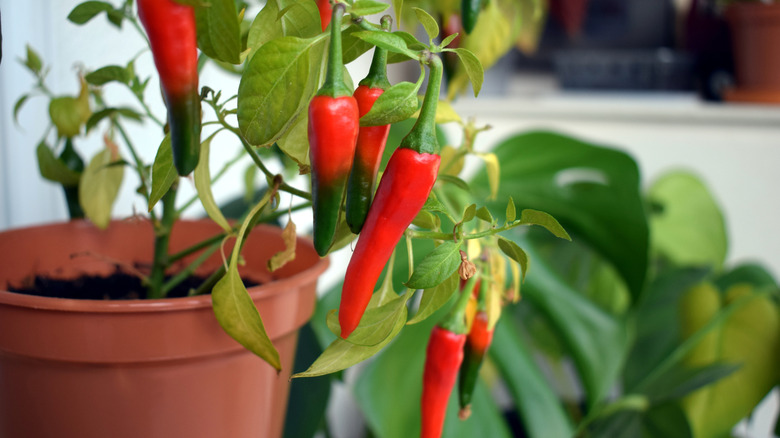Yes, You Can Grow Hot Peppers Indoors - Here's How You Can Do It
With a heavy heart, you've put your garden to bed for the season. The last of your produce is frozen and canned for later, but you're already missing the vibrant green leaves. But while spring may be a long time away, you can fake a bit of summer by growing hot peppers (Capsiscum annum) indoors. The key to success here lies in choosing a suitable variety and ensuring that the plants get plenty of light and warmth.
Peppers with more compact growth habits are best for growing indoors in containers, and there are a handful of hot peppers that take well to growing this way. If you have strong enough winter daylight where you live, or you have a grow light on hand, a couple of compact Thai chilis, jalapeños, or cayenne pepper plants can deliver you homegrown spiciness when it's too cold outside. If you're looking to diversify the pepper collection beyond the hot varieties, bell and mini sweet peppers also grow well in pots and can thrive with similar care as their hotter cousins.
You'll probably struggle to find established plants at a nursery in the fall or winter, so starting your peppers from seed will be your cheapest, most worry-free option. There are also online outlets that send live plants if you trust the shipping and delivery process. A pack of seeds and a basic Solo cup is all you need to kickstart your pepper garden, but for faster (if more costly) results, search for an online nursery that has built a reputation for delivering healthy plants.
How to set indoor pepper plants up for success
For those of you holding packets of seeds, gather up clean planting containers and soilless seed-starting mix. If you're planting in Solo cups or repurposed empty food containers, poke a few holes in their bases for drainage. Fill the containers with the germination mix and plant the seeds a ¼ inch deep. Be sure to plant more seeds than you expect to keep, so that you have a better chance of getting healthy specimens. Place the trays on a heating mat near a south-facing window or under a grow light and water them thoroughly. Also, cover them with plastic to increase the seed germination rate and hold in moisture. Thin the seedlings to 2 to 3 inches apart after true leaves develop.
For nursery-grown plants, make sure the new soil hasn't been sitting in a cold garage right before transplanting, since potting peppers in cold soil can stunt their growth permanently. Set them up in pots that are 8 inches or taller and place them on a heating mat under a grow light or in a south-facing window.
Whether you've grown them seed or bought them at a nursery, pepper plants need six to eight hours of direct sun per day to be productive. If you can't meet this condition indoors, use a grow light to give your peppers the light they need to thrive. Tropical natives that they are, peppers also want to stay warm; aim to keep the soil around 70 degrees Fahrenheit for best results. Water your new plants thoroughly but let the soil dry completely between waterings. Regular doses of a continuous-release fertilizer (follow the product's instructions), starting at transplanting, will give your peppers the boost they need to put out beautiful fruit.

